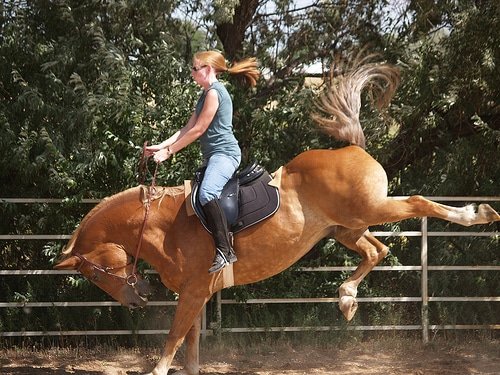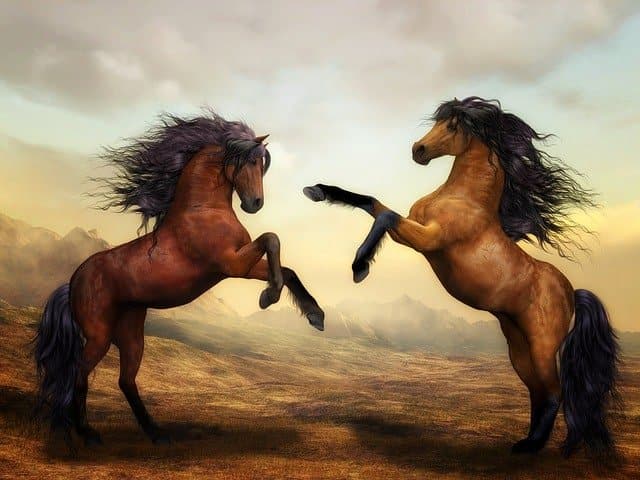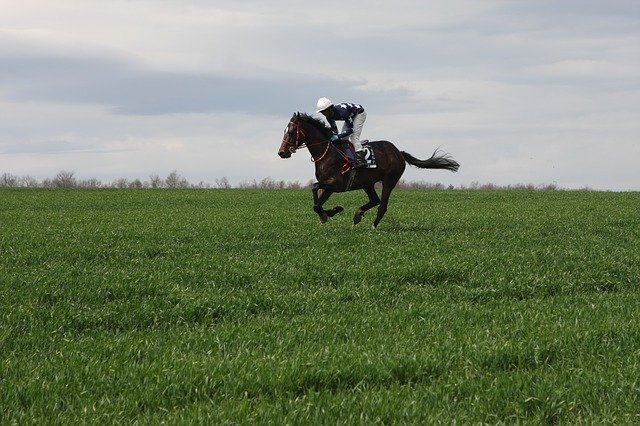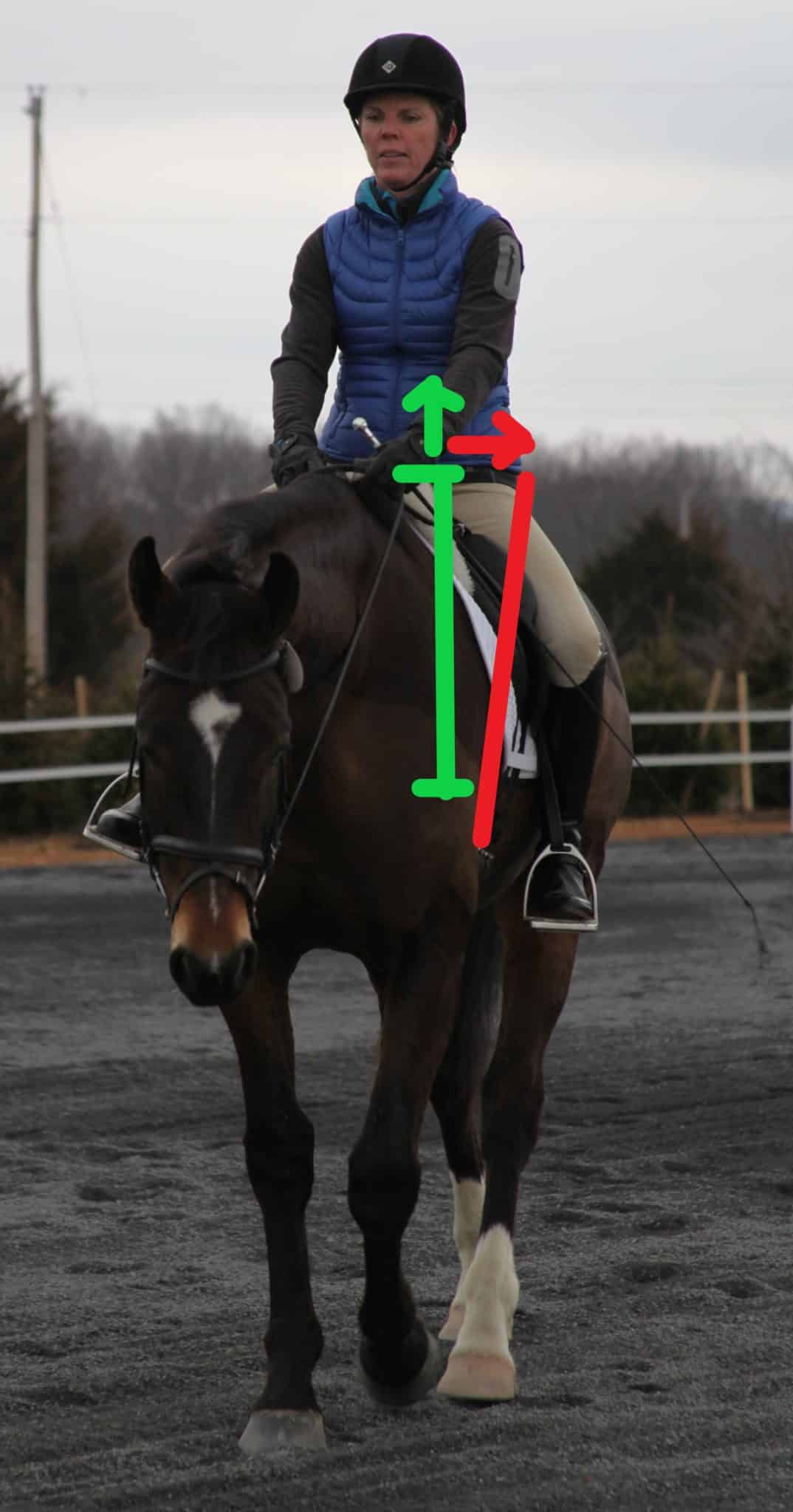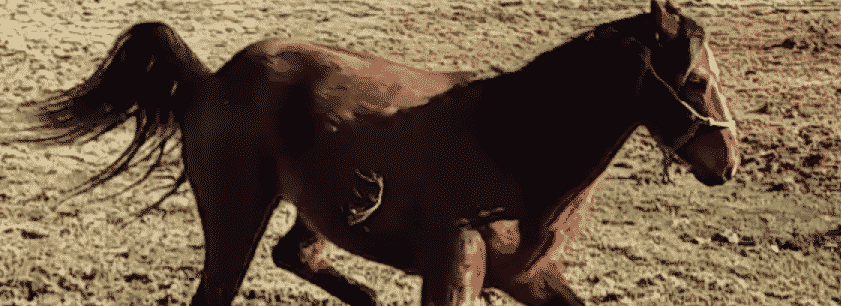
Even if you’re not a parent, you’ve probably been an aunt, uncle, or cousin to a toddler at some point. So, you’ve probably experienced the joys of dealing with a toddler who’s been sentenced to timeout. The intrepid toddler may pout, cry, or even throw a full-blown screaming tantrum. Surely this is a human phenomenon…right?
I think Moose missed that memo.
Horses are perpetual children. Moose is an example of one who never quite grew out of the toddler tantrums. Every 3 to 4 months she has a meltdown and refuses to be caught under any circumstances. She ends up running around the pasture like a lunatic and attempts to provoke the herd into running with her. Fortunately, the rest of the herd resists the temptation – most of the time – and ignores her tantrums. The meltdown invariably culminates in her herdmates being temporarily moved to a different pasture so she can have an hour of “timeout” to think about her behavior.
To many experienced horse people, I’m sure this sounds ridiculous as the common party line is that horses live in the moment and cannot associate long term punishment with the actions that caused them. But I have found that this is not always the case.
The Equine Timeout Used in Wild Herds
I actually got the idea from a documentary on Monty Roberts where he demonstrates his methods and talks about his study of wild horses. In this particular section, he talks about the way lead mares in wild horse herds scold youngsters by isolating them from the herd for an hour. Click here to see the segment I am talking about.
[bctt tweet=”#FunFact – Wild #horse herds scold youngsters by isolating them from the herd for an hour.” username=”EW_Blog” prompt=”tell a friend”]
Now, I don’t take everything Monty says as gospel, but this technique has really worked for me with Moose. It

doesn’t matter that the herd is just across the fence. They know she is in no danger, so they tend to ignore her and,
frankly, I think they are happy to have a rest from her childish tantrums. I don’t think this method would work if the herd got upset and hung out at the fence right beside her. But the herd doesn’t. They don’t completely abandon her, but they do walk off a ways and graze, paying her little attention.
During the first fifteen minutes, Moose screams her lungs out, rearing, bucking, lashing out, and literally throwing herself around the pasture. For all you parents out there, does that remind you of anything?
The Human Timeout Controversy
Time out is a controversial topic for human children. According to a recent study in the Official Journal of the Academic Pedicatric Association and from my own observations of my nieces, the most effective timeouts are those where the child is completely ignored and the timeout is only ended once the child has completely calmed down. If a parent is constantly hovering and yelling, the timeout has little or no positive effect because the child is still getting attention, so, in a sense, they are still winning. But, if the child is ignored, the timeout has a far greater success rate.
The Crossover Between Humans and Horses
This seems to be remarkably similar to Monty’s theory of timeouts for horses. Monty did not actually call it a timeout, but that is essentially what it is. The horse is separated from the herd and left there until the lead mare – or owner – decides they have had enough.
In the case of Moose, her timeout ends when she has completely calmed down and started grazing or standing quietly in her isolated pasture. I enter the pasture and she must let me catch her. If she does not allow me to catch her, she is not ready for the timeout to end. However, she only tried to call my bluff once. She tried to run again and I simply walked away and left her to it. I refused to play her game. Enter another tantrum stage right. Fifteen minutes later she let me walk right up to her in the middle of the 2-acre pasture. Now, after the first round of timeout, she gets the hint because she knows that I truly mean it.
This is not that different than children. If you are inconsistent with children, they will call your bluff and run circles around you. Horses are 1,000lb children. Many of them grow out of the toddler tantrum stage. Though a few, like Moose, seem like they never will quite grow out of it. Those that make it past the toddler stage still never quite make it past the human teenage stage, but we still love them despite their antics.
What does this mean for horse trainers?
I’m sure there is someone reading this who is going to accuse me of anthropomorphizing. But my answer to the naysayers is this: who started this behavior first? Were humans really the first ones to institute the “timeout?” If we really started examining the behavior of other herd animals, I am suspicious that we would start finding similar behavior present in species that have ancestry older than our own. So is it really accurate to say that we are projecting human traits onto animals if animals had those traits first?
What do you think?
[bctt tweet=”Is it accurate to say we are projecting human traits onto animals if they had those traits first?” username=”EW_Blog” prompt=”join the conversation”]






